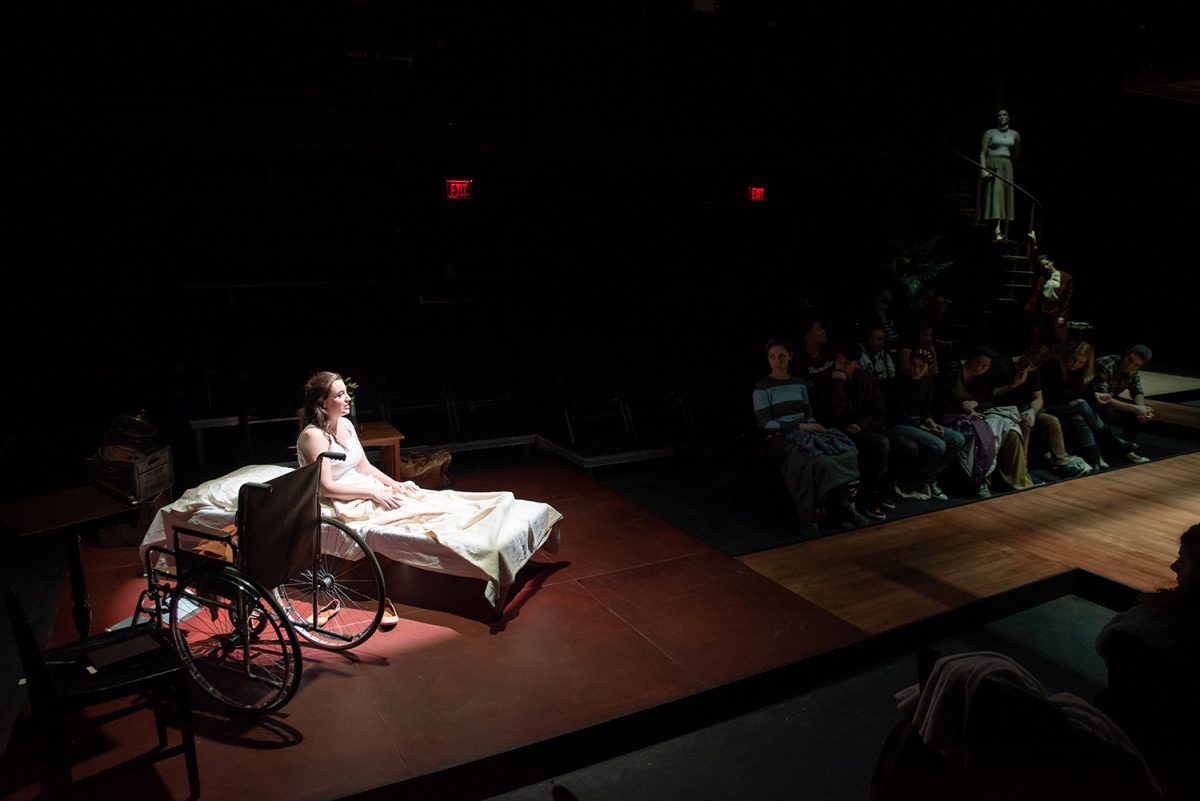Courtesy of Hofstra Department of Drama and Dance
Mystery, shock and emotion: These are all words that one could use to describe “Fefu and Her Friends.” Within the course of a single day, lead character Fefu and her seven female friends journey through the many twists and turns of their crazy relationships with one another, while simultaneously attempting to remain sane.
Hofstra’s rendition of “Fefu and Her Friends” included many notable elements in its performance. One of these was the all-female cast, but aside from this, because black box theaters call for such close connection between the actors and their audience, it truly felt as though the characters were attempting to bond with the crowd and make them understand their emotions. Some cast members even admitted to not realizing just how close the audience would be to them.
During the cast talkback that was held following the performance on Thursday, Nov. 14, audience members were given an inside look into the rehearsal process. There, it was revealed that the first day of classes at Hofstra was when the cast held its read-through of the script. However, Tuesday, Oct. 1, marked the first official day of rehearsal. The performers practiced the show five times a week during the six-week-long rehearsal period, having run the entire show a total of 24 times. Though they felt like time passed by quickly, the process was nonetheless an enjoyable experience for all. Outside of practice, the cast was able to form a close bond, whether it was grabbing fast food together or having a movie night.
However, the actresses were faced with their own set of challenges during the process. Performing in a black box theater, the cast had to be mindful of how they angled themselves. “Back-ting” was the coined term they used to describe the fact that even when they had their backs facing a section of the audience, they still needed to remain in character. Additionally, without the assistance of microphones, the cast was given the task of projecting their voices into the crowd. Because the show was set in 1935, its vernacular was slightly different from what is used in modern society. Those involved in the assembly of production collected nearly 32 pages of research solely about the jargon of the ‘30s.
The design choices throughout the show were essential to its quality. The lighting design in particular drew the audience’s attention to where the focus was. Costumes also played a large role, as there were many, and each added to the character’s overall persona. Whether it was a gun or a pitcher of lemonade, the props and set design brought the set to life. Sounds such as loud booms and crashes or birds softly chirping also added to the production’s extremely eerie ambience.
While every element of the show did itself justice, there was one piece that caused much confusion for many audience members – the plot. One aspect that was made clear, however, was the storyline’s very provocative nature, which included multiple sexual innuendos. Though it was hard to follow, one thing was for sure; the lines expressed were spoken with much passion, dedication and confidence. The conviction of the delivery kept viewers wanting more.
Overall, regardless of whether one understood the plot or not, the commitment to the script was evident in the cast’s performance. “Fefu and Her Friends” kept its audience on the edge of their seats, ready to witness whatever shenanigans took place next.







